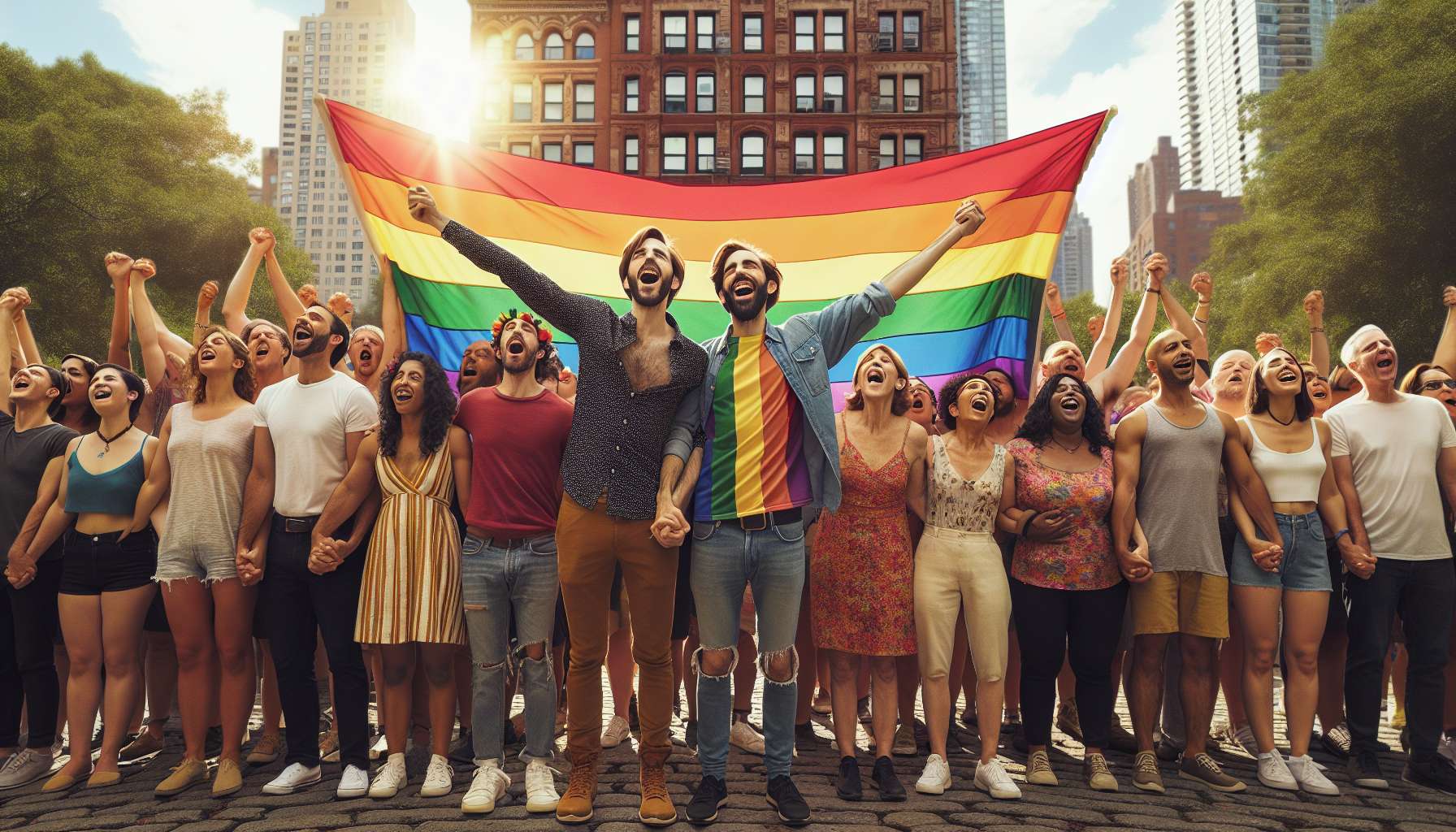Gay people represent a significant and influential portion of the LGBTQ+ community. The term “gay” generally refers to a man who feels an emotional, romantic, and/or sexual attraction towards other men. However, it is important to underline that being gay encompasses a wide diversity of experiences and expressions.
The history of gay people is marked by a long struggle for recognition and equal rights. Pioneering figures like Harvey Milk, the first openly gay man elected to public office in the United States in the 1970s, have paved the way for greater visibility and representation of gays in society. The Stonewall riots in 1969, instigated by gay, lesbian, and trans individuals in response to police raids, marked a decisive turning point in the affirmation and mobilization of LGBTQ+ communities.
Gay culture has been expressed and developed through various forms of artistic and media outlets. Literature has played a key role, with emblematic authors like James Baldwin, Oscar Wilde, and Jean Genet who have explored the themes of homosexuality, desire, and marginality in their works. Cinema, particularly the “New Queer Cinema” of the 1990s with films like “Paris is Burning” or “My Own Private Idaho“, has contributed to making the lives and loves of gay men visible. Pop culture icons, from Freddie Mercury to George Michael and Elton John, have also contributed to greater acceptance and celebration of gay artists.
Bars, nightclubs, and saunas have historically constituted essential socializing and meeting places for gay men, at a time when homosexuality was still criminalized and repressed. Nowadays, although these places remain important, especially for young gays in the process of exploration and identity construction, flirting and dating have also largely moved to applications like Grindr or Hornet. This raises new issues in terms of intimacy, consent, and prevention of HIV and STIs.
Gay men continue to be a population particularly exposed to HIV/AIDS. Immense progress has been made since the 1980s and the onset of antiretroviral therapy, with the life expectancy of people living with HIV now reaching that of the general population, but prevention and screening remain crucial. Gay men are also more at risk of suffering from mental health issues (anxiety, depression, addictions) due to minority stress and internalized homophobia. Access to suitable and compassionate healthcare is a major issue.
Despite legal progress such as the opening of marriage and adoption to same-sex couples in many countries, gay men still face discrimination and violence on a daily basis. Homophobia persists, whether in public spaces, at work, or in families. Gays can be subject to rejection, harassment, and physical assaults. Young gays, in particular, are at increased risk of suicide, hence the importance of associations like Le Refuge in France that offer support and emergency housing.
In the face of these challenges, gay men organize and mobilize to defend their rights and celebrate their pride. Pride Parades gather millions of LGBTQ+ people and their allies worldwide every year. Associations like AIDES or Act Up carry out essential work in terms of prevention, support, and advocacy. Initiatives such as the “National Coming Out Day” encourage gay individuals to live out their sexual orientation openly and raise awareness among those around them.
As an LGBTQ+ coach, it is fundamental to be aware of these realities to better support gay men in their journey. This involves creating a safe and compassionate space, free from judgement, to welcome their narratives. It also includes guiding them towards relevant resources according to their needs (health, legal, associative). The goal is to support gays in their processes of acceptance, affirmation, and flourishing, respecting the uniqueness of each journey.
Key points to remember:
– The term “gay” generally refers to a man attracted emotionally, romantically, and/or sexually to other men, but encompasses a wide range of experiences.
– The history of gay individuals is marked by a struggle for recognition and equality, with pioneering figures like Harvey Milk and key moments such as the Stonewall riots.
– Gay culture is expressed through literature, cinema, and music, with emblematic artists who have contributed to greater visibility and acceptance.
– Bars, clubs, and dating apps are important social spaces for gay men, raising issues of intimacy and prevention.
– Gay men are particularly exposed to HIV/AIDS and mental health problems, requiring access to adapted healthcare.
– Despite legal advances, gays still face daily discrimination and violence, with young people particularly at risk of suicide.
– Gay men mobilize through parades, associations, and initiatives to defend their rights and celebrate their pride.
– As a coach, it is crucial to create a safe and compassionate space to support gays in their journey of acceptance and flourishing, adapting to each individual’s path.
👉 To download docx (Editable) file click here : Click here
👉 To download PDF file click here : Click here
👉 To download MP3 file click here : Click here







